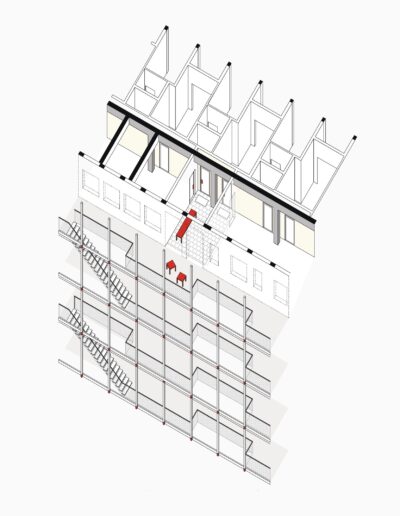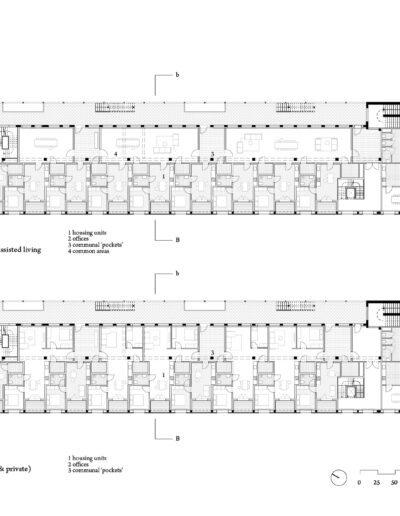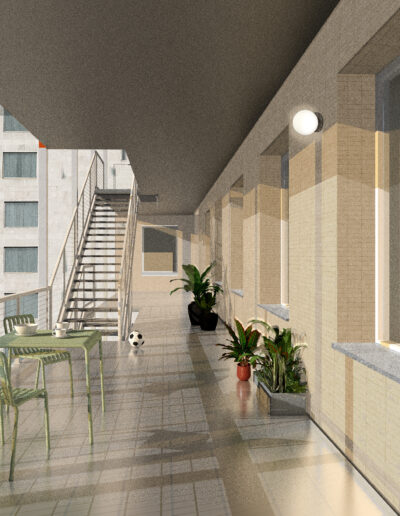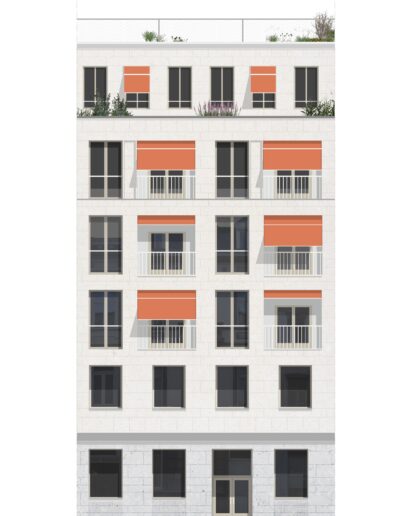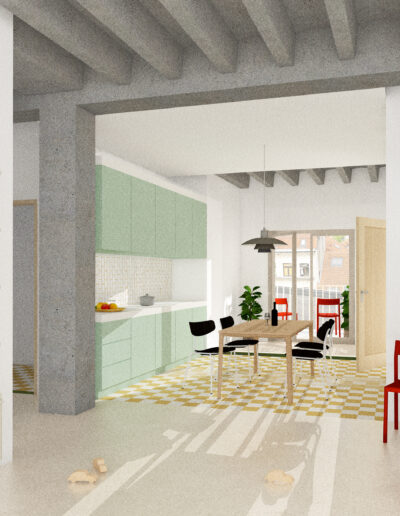The triptych: typology, topology & tectonics
Zena Ndiaye
Master Architectuur
2023 — 2024
studio
Spaces of transition
promotoren
Mario Rinke
Robbe Pacquée
The triptych: typology, topology & tectonics
This research bridges the gap between architectural theory and practice by developing analytical tools for the adaptive reuse of vacant buildings, focusing on a Brussels office conversion. Inspired by Habraken and Kieckens, it reconceptualises building permanence through the interconnected principles of typology, topology, and tectonics.
The gap between theoretical knowledge of adaptability and practical architectural production is significant. Theory often elucidates the changeability of buildings but lacks practical application. My research aims to bridge this gap by developing analytical methods to inform design decisions, specifically in repurposing a vacant office building in Brussels. This project serves as a tangible test of theoretical propositions in a real-world context. Central to this thesis is the concept of the support in architecture, the most enduring element of a building.
This thesis reconceptualises the most permanent part of a building as a system incorporating typology, topology, and tectonics. These are principles essential to sustaining and adapting architecture, as articulated by John Habraken and Christian Kieckens. Consequently, I identify effective conversion methods by examining Willy Van Der Meeren’s HBK design, where the support concept is applied to an office building in Antwerp. This approach provides an intellectual framework for the design process, revisited iteratively. However, these methods, developed when new construction was prioritised over reuse, lack specific guidance for existing structures, which often exhibit anomalies from site conditions or previous designs. They predominantly focus on strategy, sometimes neglecting the architectural quality of the resulting adaptations. To address these limitations, I supplement existing methods with holistic considerations, aiming to achieve more effective and qualitative architecture.

